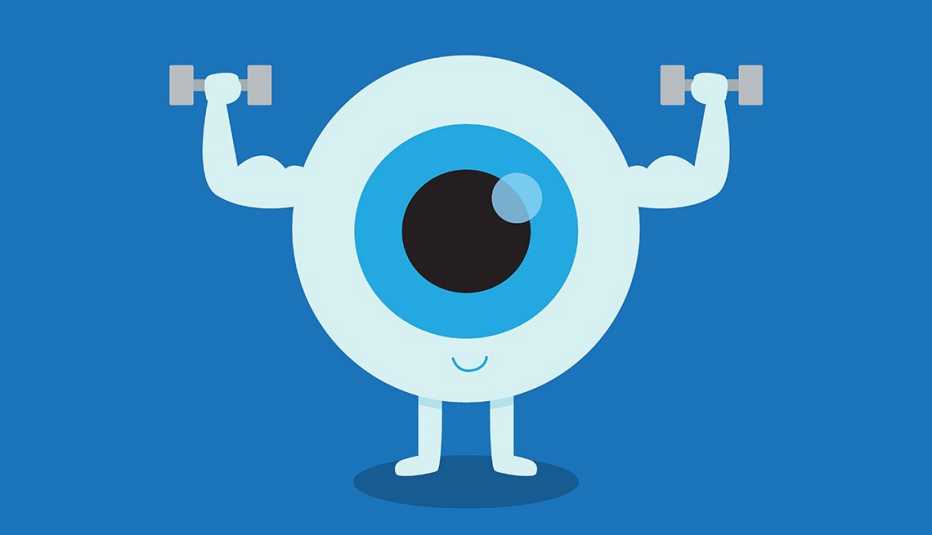AARP Hearing Center


Maybe you’ve seen social media posts, smartphone apps or ads promoting eye exercises as a way to ease eye strain, improve your vision or banish wrinkles. Some even promise to eliminate the need for glasses or contacts.
While there are some eye exercises that can be beneficial, experts say it’s important to know that there’s no scientific evidence showing that a regimen of eye exercises can “fix” your eyesight.
“No scientific evidence shows any effectiveness to the self-help stuff you might find on the internet,” says Ron Benner, president of the American Optometric Association and an optometrist in Laurel, Montana. “You need to differentiate that from doctor-prescribed vision therapy.”
Vision therapy is a specific type of program that doctors may prescribe to help with certain eye conditions, but those conditions mostly affect younger patients, Benner says.
Here’s five more things you need to know before you start eye exercises:
1. Eye exercises won’t correct most vision problems
While eye exercises are unlikely to cause any harm, there is also no proof that eye exercises or vision training can make your eyesight sharper, the American Academy of Ophthalmology says.
Problems that require corrective lenses such as nearsightedness, farsightedness or astigmatism are caused by the structure or shape of the eye – not a muscle weakness – so exercises are unlikely to have any benefit, Benner says.
Exercises also won’t help you ditch your reading glasses. Presbyopia, the condition that makes it difficult to focus on close-up objects as you age, happens when the lens thickens with age and gets stiffer. Strengthening your eye muscles won’t make your lens any more flexible, Benner says.
Other conditions that affect vision including cataracts and macular degeneration also can’t be treated with exercises, he says.
“There are no real exercises to help with the eyesight problems that tend to come with getting older,” Benner says.



































































More on Eye Health
Is Caffeine Good or Bad For Your Eyes?
How your morning (and afternoon) cups of coffee affect five eye conditions
3 Warning Signs of Macular Degeneration
Plus, tips that may help stop the disease from progressing
8 Bad Habits for Your Eyes
Everyday actions that can affect your vision and your health